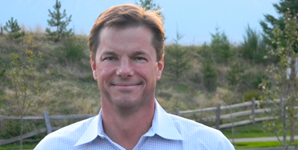Audio post industry not entirely on board with CALM Act
Now that the CALM Act is mandate and enforcement has theoretically begun, the “perceived loudness” of advertising spots on television should be generally acceptable to most viewers. Getting there, however, has been far from easy at this point.
For the most part, stations have spent the effort (and money) to implement safeguards that ensure proper audio levels, as mandated in the CALM Act. As a recent example, Fisher Communications' 13 local stations are now deploying Monitor IQ audio measurement technology from Digital Nirvana. Monitor IQ provides Web-based, HD/SD channel monitoring, logging, compliance and diagnostics/QC, as well as archiving of content recordings for up to 90 days.
Lee Wood, regional director of engineering for Fisher Communications (in Seattle, WA) said the stations will use Monitor IQ for regulatory compliance and loudness monitoring of its off-air HD and SD DTV channels.
So, monitoring the outgoing program stream is critical. But what about the content coming into a station? Station engineers have said that the audio levels of the original commercial spots and other content being ingested on a daily basis are all over the spectrum. Indeed, there are probably as many ways of monitoring and adjusting audio levels as there are professional mixers tasked with doing it. That breeds confusion. Add to that the general perception across the advertising community that loudness is really someone else’s issue, namely the local stations and cable TV outlets that distribute it, and you begin to see broadcasters’ concern. They are the ones that risk being fined by the FCC, not the original content creator.
After speaking with companies that deliver ads electronically to stations — in the form of a digital file — you get the impression that there is still much work to be done to get all of those involved with mixing the original piece to readily comply with the law and provide content that does not have to be adjusted at the station before broadcast.
Creative community resisting CALM

“The audio post houses don’t seem to have their hands around this yet,” said Wayne Dykes, CEO of SpotGenie, a digital advertising delivery service in Atlanta, GA. “We get spots quite frequently that are not compliant with the CALM Act, and we either try to auto-fix them ourselves or, if time permits, we kick it back. But if we’re up against an airdate, we have to fix it ourselves, which brings up a number of creative issues.”
Indeed, the creative part of the commercial industry has balked at having any elements of their ads regulated by the government. Before President Obama signed the CALM Act into law (in 2010), the ad community lobbied against mandated audio levels. Apparently, creatives are not good at adhering to rules.
The professional video industry's #1 source for news, trends and product and tech information. Sign up below.
“I know the deadline has come and past for the CALM Act to be enforced, but we still see some people dragging their heels and not doing anything differently,” Dykes said. “You have to remember that the audio post house is trying to impress their client in the mixing suite, so the higher level is key to a good listening experience. Once the client approves the spot, the post house feels its job is done and sends it along down the chain for someone else to worry about.”
Passing the buck appears to be the prevailing strategy, since the FCC has stated that the entity that delivers the spot is the one that will be fined if viewers complain. If professional mixers are following the -10db spec that the industry has always adhered to, it can easily be fixed to comply with the -24 LKFS spec mandated as part of the CALM Act. Yet Dykes said he regularly sees local and national spot audio levels a lot higher than that.

“I think producers are starting to understand that if their levels are way out of spec, someone along the broadcast chain is going to squash that audio to make it compliant, and that compromises the integrity of that ad,” said Robert Haskitt, chief marketing officer at Extreme Reach, a web and TV advertising delivery, management and measurement company based in Needham, Mass. “No one wants to risk a fine by the government. So, what we would prefer is to have a conversation with a broadcaster to make sure everyone’s goals are met. We never want to miss an air date because the audio level is too high.”
Extreme Reach regularly works with more than 1000 post-production houses around the country and finds audio levels are all over the place. At this point, Haskitt said, most are compliant, but 15 to 20 percent need some type of audio fix. Some ads go directly from an editor’s workstation at a post house to a cloud-based server operated by Extreme Reach and then on to the final broadcast outlet. This can happen within minutes. Other times, an ad has to be remixed, which takes extra time and money.
Automated spot checks are key
“When it comes to audio levels, our spec is based on the CALM Act,” Haskitt said. “Up until the last year, we have been monitoring peak levels and reporting if they exceeded a certain level. The CALM Act is more about the average level across commercials [LKFS]. As everyone has been trying to work on ways to keep content compliant, we have been able to implement automated spec checks to make sure the audio level meet the spec of -24 LKFS (that is, Loudness, K-weighted, relative to Full Scale, a loudness standard designed to enable normalization of audio levels for the delivery of broadcast TV and other video). If it does not, Extreme Reach will try to fix it on a minor level (within +/- 2db). If it falls out of that spec, our system can adjust it, but if it’s nowhere close, we push it back to the post house for additional mixing. We don't want to step in someone’s creative vision, so it’s a good policy to let the post house fix it before it is broadcast.”
SpotGenie also works with thousands of post houses (and serves ads to some 3000 broadcast and cable outlets) and can fix minor problems automatically with transcoding technology like Rhozet’s Carbon Coder and Telestream’s FlipFactory. The company uses proprietary software to QC all files as they come into its facility and alert them to problems with either the video or audio levels.
“Either we fix it or the station does,” Dykes said. “However, in applying these auto fixes, we have seen cases where it definitely affects the original mix.”
They recently had a client that advertised during the BCS college national championship game that heard their spots on air during the ESPN broadcast and called SpotGenie to complain. The client said the mix sounded differently than it had in the studio. Dykes said they explained that this is common after a spot goes through the broadcast chain. The client wound up spending the time and money to remix the spots because they felt it didn’t meet its creative goals.
Achieving creative goals while remaining compliant with the law
“Not everyone is willing to do that,” SpotGenie’s Dykes said. “If the audio mixers don't do it right, they think the broadcaster will fix it. So, that’s why I think the audio post industry has to do a better job of educating its members about how to achieve your creative goals while also remaining compliant with the law.”
SpotGenie also has a sister audio post-production company called Acoustic Music, in Atlanta, so Dykes sees what’s happen in the mixing suite firsthand. He said there’s still work to be done.
“I don't think that many audio engineers that mix commercials have gotten as serious about the issue as they should,” he said. “There was never a law before. Now the CALM Act, combined with the risk that a spot will get kicked back by the client, are good reasons to pay attention to the final mix levels. I think it will work itself out and everyone will eventually become compliant. The audio mixers also need to understand that if an audio level needs to be compressed, it’s better for the post house to do it than the broadcaster (who does not have as much invested in that spot). The CALM Act has allowed audio mixers to have more control over the final listening experience because now the exact spec they should mix to. If they don't mix to that spec, their spot might be compromised down the line.”
The biggest hurdle is reaching industry consensus, in spite of the law. Commercials are produced from different sources with different workflows and wide-ranging creative decision makers. The methods of mixing are equally diverse. Getting everyone to understand the importance of compliance at the creative level is key. Broadcasters have done (and continue to do) their part.
“Different advertisers have different perspectives,” Extreme Reach’s Haskitt said. “We’ve heard some advertisers saying they don't want to be regulated as far as how the ad runs. As we all can surmise, advertisers love their spots to run hot [loud]. Other advertisers understand that the audience gets annoyed when a spot is too loud, and so that viewer either turns down the audio level or walks away from the TV. Theses are two scenarios that advertisers fear the most. So, many feel that if you want your spot to be seen, you should make it compatible with what the government has decided viewers can tolerate. It’s really that simple.”
